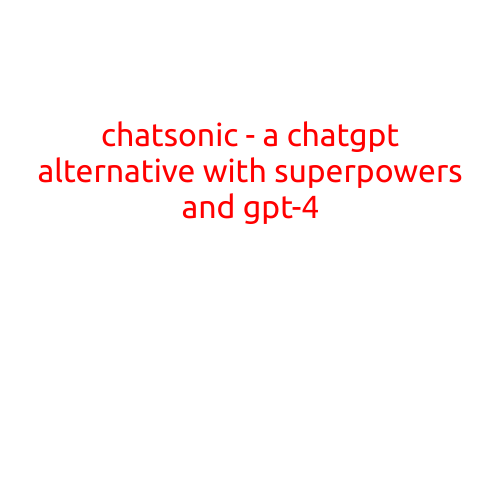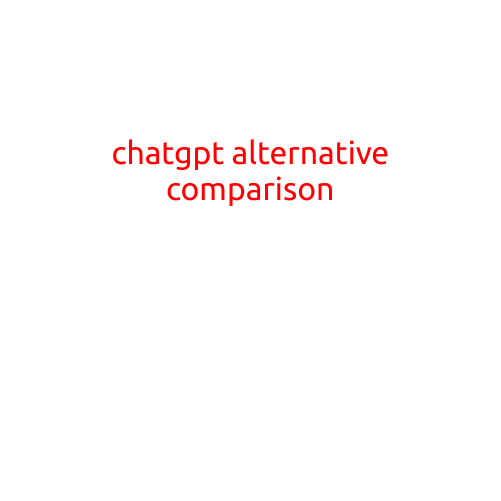
Chinese ChatGPT Alternative: Meet the AI Language Models That Are Giving ChatGPT a Run for Its Money
The rise of AI-powered chatbots has taken the world by storm, and no one is more excited than the tech-savvy minds in China. In recent years, Chinese developers have been working tirelessly to create their own versions of the popular chatbot, ChatGPT. The result? A slew of innovative language models that are giving the original ChatGPT a run for its money.
In this article, we’ll delve into the world of Chinese ChatGPT alternatives, exploring the top contenders, their features, and what sets them apart from the rest. Whether you’re a developer, entrepreneur, or simply a curious learner, this article will give you an insider’s look at the exciting world of Chinese AI chatbots.
Top Chinese ChatGPT Alternatives
Ernie Bot: Developed by Baidu, one of China’s largest tech companies, Ernie Bot is an AI-powered chatbot that uses natural language processing (NLP) to understand and respond to user queries. With its vast knowledge base and ability to learn from user interactions, Ernie Bot is quickly becoming a popular alternative to ChatGPT.
DALL-E Mini: This AI-generated chatbot is the brainchild of Chinese AI startup, MEGVIII. DALL-E Mini uses a combination of text-to-image generation and NLP to create stunning visual results. With its ability to generate images based on user prompts, DALL-E Mini is an exciting alternative to ChatGPT’s text-based interface.
XiaoIce: This AI-powered chatbot is a product of Microsoft Research Asia and is specifically designed for conversational interfaces. XiaoIce uses a combination of NLP and machine learning to understand user queries and respond accordingly. With its advanced language processing capabilities, XiaoIce is an excellent ChatGPT alternative for developers and entrepreneurs.
Sinch: Developed by Chinese AI startup, Sinch.ai, this chatbot uses NLP and machine learning to understand user queries and respond with relevant information. Sinch’s unique feature is its ability to learn from user interactions, allowing it to adapt to individual user preferences.
What Sets Chinese ChatGPT Alternatives Apart
Integrations with Chinese Ecosystems: Chinese ChatGPT alternatives are designed to integrate seamlessly with China’s vast ecosystem of social media platforms, e-commerce platforms, and mobile operating systems. This means that developers can easily integrate these chatbots into their existing applications and reach a wider audience.
Advanced Language Processing: Chinese language processing is notoriously complex, and Chinese ChatGPT alternatives have made significant strides in overcoming this challenge. With advanced NLP capabilities, these chatbots can understand and respond to user queries in a more accurate and efficient manner.
Cost-Effective: Developing a chatbot from scratch can be a costly and time-consuming endeavor. Chinese ChatGPT alternatives offer a more cost-effective solution, allowing developers to create high-quality chatbots without breaking the bank.
Conclusion
The rise of Chinese ChatGPT alternatives is an exciting development in the world of AI chatbots. With their advanced language processing capabilities, ability to integrate with Chinese ecosystems, and cost-effective solutions, these chatbots are giving ChatGPT a run for its money. Whether you’re a developer, entrepreneur, or simply a curious learner, exploring these alternatives is an essential step in staying ahead of the curve in the world of AI.





